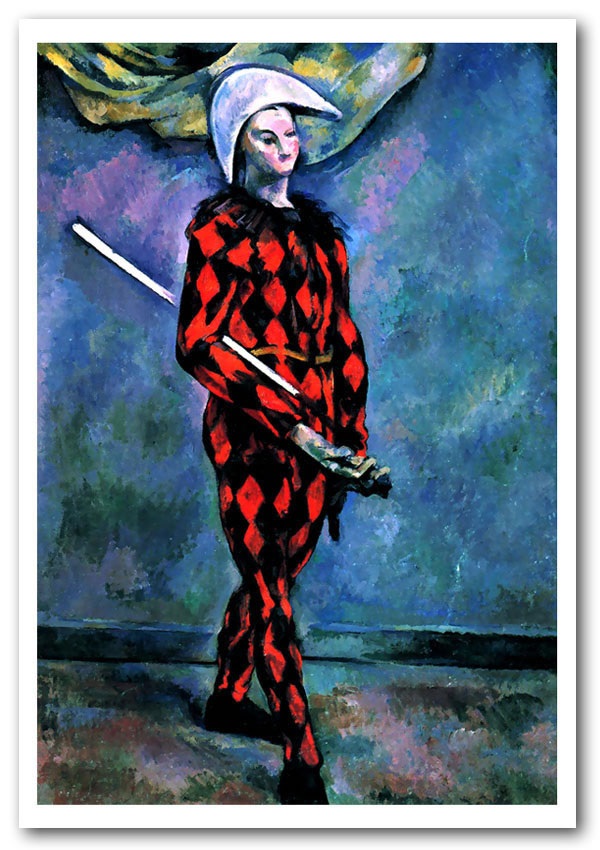This album contains my interpretations of selected works of Claude Debussy that I adore. All are electronic creations and are taken from scores published on the IMSLP website. I meticusly input the notes into midi format and adjust tempo, velocity and other parameters to get the notes to an almost perfect state. I then create the instruments with care and precision to try to evoke the mood of the piece. In some, I use many different sampled pianos and effects to create the sonic space I desire. In others, I interpret the instruments in the spirit of Isao Tomita layering sounds and effects to create a unique work instantiating my conception of Debussy’s vision. I hope that you enjoy these works.
The album consists of two works, Suite Bergamasque which is a piano suite and two interpretations of Arabesque # 1 in E.
First up is the Suite Bergamasque originally written around 1890 but significantly changed/revised and released in 1905. A bergamasque is associated with a sixteenth-century form of improvised Italian street theater called commedia dell’arte. In this art form puppets and live actors play stock characters and usually wear masks. It is marked by characters like the harlequin. The performers or puppets typically used masks with long noses.

Note that this is a piano suite, so for the recording of the four movements I created a piano that cannot exist in reality. I used a sampled grand piano I call 12 Meter Grand that came with Reason Suite but I significantly changed the patch and parameters to make it behave in the sonic manner that I wanted. I subsequently mixed in another sampled piano with effects that I call Mark 80 with Pedalboard. It is a Fender Rhodes and has some slow phase shift along with reverb and a slight delay and a minimal chorus. I then mixed in a track using a patch called Distant Grand which is a sampled Yamaha grand put through several multiband compressors and reverbs to just capture distant reflections. This makes it sound as if the piano is being played in a canyon but you are only hearing the reflections, not the piano itself. I added this track to evoke a sense of space. Finally, I add a patch called Protection Grand which, again, is a sampled Yamaha grand with close mics but is blended into the background of the mix. The velocity curves on the protection grand patch only come to the forefront of the performance in the Fortissimo passages and therefore it is used to accent these elements.
Track 1 – Prelude
This movement is written in the key of F and is marked moderato tempo rubato which tells the player that you should play it moderately with an expressive rhythmic freedom. To me, the piece feels quite grand and expansive and the embillisements are like an arabesque. It flows, it pauses, it is good.
Track 2 – Menuet
This movement is in A minor and is marked to be played audantino or more lightly than andente. It is also very delicate. It features a lot of light embellishments that make it very arabesque like in sonic character. Soft, wide and expansive is how I would describe it.
Track 3 – Clair de lune
Probably the most famous piece that Debussy ever wrote. The piece is in Db major and is written to be played andante tres expressif. The title is taken from Paul Veraline’s poem Clair de lune.
Your soul is a chosen landscape
Where charming masquerades and dancers are promenading,
Playing the lute and dancing, and almost
Sad beneath their fantastic disguises.
While singing in a minor key
Of victorious love, and the pleasant life
They seem not to believe in their own happiness
And their song blends with the light of the moon,
With the sad and beautiful light of the moon,
Which sets the birds in the trees dreaming,
And makes the fountains sob with ecstasy,
The slender water streams among the marble statues.
I love this piece, it is one of my all time favorites. I spent a lot of time trying to get this perfect and have been working on it since 2008. I am finally, almost, happy with the result. It does remind me of moonlight on the water.
Track 4 – Passepied
This last movement in the suite is in F# minor and marked allegretto ma non troppo. A passepied is a type of dance performed in Brittany and this movement is fast and light with a rather difficult left hand! In the 17th century a passepied dance was marked with syncopation but in this movement here Debussy does not use this. Slowly it builds, moves forward, softly then with more feeling. A wonderful closer to the suite.
Track 5 – Arabesque in E with Synthesized Instruments
Here Debussy created sonic representation of an arabesque. An arabesque is surface decorations based on rhythmic linear patterns of scrolling and interlacing foliage. In this piece Debussy does this in the music, both visually when you look at the score and sonically as you listen to it. This is 10 tracks of interpretation and is dedicated to the memory of Isao Tomita who inspired me in my synthesis work. I always loved listening to his renditiion, this is mine.
Track 6 – Arabesque in E
I include the original piece on piano to show the contrast between my intrepretation and the original.
**** Thanks to IMSLP for the work you do, without you I would not have the scores to base my work upon.
**** Thanks to Dr. Shulin Guo for your excellent paper on Debussy and the Suite Bergamasque. I have read your paper several times and find it very insightful and very well researched. I apologize as I lifted a few of your ideas for my descriptions of the pieces. Excellent and informative work! You can read it here: A study of Claude Debussy’s Suite Bergamasque